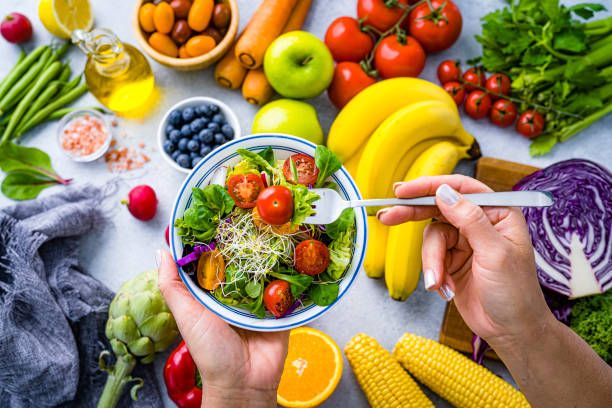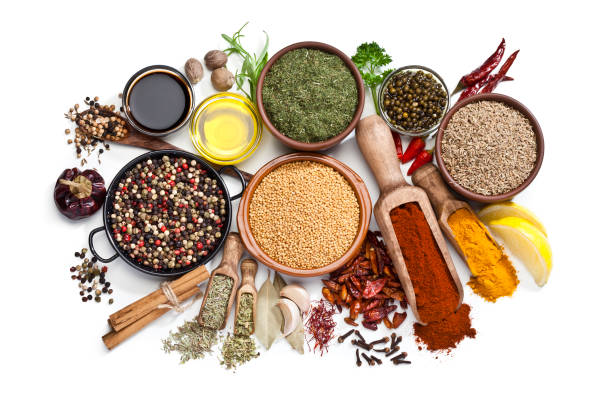Why Your Grocery List Matters for Eye Health
When you think about eye care, you may picture glasses, eye drops, or regular checkups. Those are important, but what you put in your shopping cart also plays a big role in how well your eyes work every day.
Your eyes need certain vitamins and minerals to stay healthy, just like the rest of your body. Without the right nutrients, your risk of vision problems goes up. The foods you eat can help prevent issues like macular degeneration, cataracts, and dry eyes, which are common as people get older. Eating the right foods also supports sharper vision, better night vision, and even less eye strain from long hours on screens.
The best part? You don’t need a complete diet overhaul to make a difference. By making small, smart changes in your grocery list—like swapping white bread for whole grains or adding more colorful veggies—you can give your eyes the nutrition they need to stay strong and clear for years to come.
Key Nutrients for Healthy Eyes
Before we dive into the ultimate grocery list for healthy eyes, let’s look at the key nutrients that matter most for vision. Each one plays a special role in keeping your eyesight clear and protecting your eyes from damage.
- Vitamin A – Supports night vision and prevents dryness by keeping the surface of your eyes moist. Without enough Vitamin A, your eyes may feel irritated or your vision may get blurry in dim light.
- Vitamin C – Helps reduce the risk of cataracts by protecting the eye’s lens. It also boosts your immune system and helps repair eye tissues.
- Vitamin E – Works as a strong antioxidant, protecting eye cells from free radical damage that can lead to age-related vision problems.
- Lutein and Zeaxanthin – These antioxidants act like natural sunglasses. They filter harmful blue light from screens and the sun, reducing stress on your retina.
- Omega-3 Fatty Acids – Found in fish and seeds, omega-3s reduce dry eyes, support healthy tears, and protect your retina.
- Zinc – A powerful mineral that helps Vitamin A work properly in the eye. Zinc also supports the retina and may lower the risk of night blindness.
When you shop with these nutrients in mind, you’ll be filling your basket with foods that nourish your eyes from the inside out. Over time, these simple choices can help you avoid common vision problems and keep your eyesight sharp as you age.
The Ultimate Grocery List for Healthy Eyes
1. Colorful Vegetables: The Eye’s Best Friend

Vegetables are packed with antioxidants, vitamins, and minerals. Choose a rainbow of colors to cover all your bases.
Top Picks:
- Carrots (rich in beta-carotene, a form of Vitamin A)
- Sweet potatoes
- Spinach
- Kale
- Red bell peppers
- Broccoli
💡 Tip: Aim for at least one dark leafy green every day.
2. Fruits That Protect Your Vision
Fruits are high in Vitamin C, which supports the health of your eye’s blood vessels.
Top Picks:
- Oranges
- Kiwi
- Blueberries
- Strawberries
- Grapes
- Papaya
💡 Tip: Berries and citrus fruits are especially powerful for eye protection.
3. Protein Sources That Boost Eye Health
Protein doesn’t just help build muscle—it also fuels your eyes.
Top Picks:
- Salmon (rich in omega-3 fatty acids)
- Tuna
- Mackerel
- Eggs (egg yolks contain lutein and zeaxanthin)
- Chicken breast
- Turkey
💡 Tip: Try to eat fish at least twice a week for maximum benefits.
4. Nuts, Seeds, and Legumes
These small but mighty foods pack a big punch of eye-friendly nutrients.
Top Picks:
- Almonds (Vitamin E)
- Walnuts (Omega-3s)
- Chia seeds
- Flaxseeds
- Lentils
- Chickpeas
💡 Tip: A small handful of nuts makes the perfect snack for eye health.
5. Whole Grains for Long-Term Vision Support
Whole grains help lower the risk of age-related eye conditions by balancing blood sugar levels.
Top Picks:
- Quinoa
- Brown rice
- Oats
- Barley
- Whole wheat bread and pasta
💡 Tip: Swap white bread for whole wheat to support both eye and heart health.
6. Dairy and Fortified Alternatives
Calcium-rich foods and fortified alternatives can support eye muscles and nerve function.
Top Picks:
- Low-fat milk
- Yogurt
- Cheese
- Fortified almond milk or soy milk
💡 Tip: If you’re lactose intolerant, choose fortified plant-based options.
7. Spices and Extras That Help Your Eyes

Even your spice rack can support better eye health.
Top Picks:
- Turmeric (anti-inflammatory)
- Garlic (improves blood circulation)
- Green tea (rich in antioxidants)
- Dark chocolate (yes, in moderation!)
💡 Tip: Replace sugary drinks with green tea for a boost of antioxidants.
Building Your Eye-Healthy Grocery List
To make shopping easier, here’s a quick grocery checklist you can take with you:
✅ Vegetables: Carrots, kale, spinach, bell peppers, broccoli
✅ Fruits: Oranges, kiwi, blueberries, grapes
✅ Proteins: Salmon, eggs, chicken, turkey
✅ Nuts & Seeds: Almonds, walnuts, flaxseeds, chia seeds
✅ Whole Grains: Quinoa, oats, brown rice
✅ Dairy/Alternatives: Yogurt, fortified almond milk
✅ Spices & Extras: Turmeric, garlic, green tea, dark chocolate
Print or save this list to use on your next grocery trip.
Smart Shopping Tips for Eye Health
- Shop the perimeter of the store. That’s where you’ll find the freshest items like produce, fish, and dairy. Most of the middle aisles are packed with processed foods that don’t give your eyes the nutrients they need. By focusing on the outer aisles, you’ll naturally pick healthier options.
- Buy frozen veggies and fruits. Don’t worry if fresh produce spoils too fast. Frozen fruits and vegetables are picked at their peak and quickly frozen, so they still have most of their vitamins and antioxidants. They are also budget-friendly and last much longer, making it easier to always have eye-healthy foods on hand.
- Read labels carefully. Not all products labeled “healthy” are good for your eyes. Look for “whole grain” as the first ingredient in bread, pasta, or cereal. Whole grains help keep blood sugar levels steady, which supports long-term vision health.
- Limit processed foods. Chips, packaged snacks, and sugary treats often lack the vitamins and minerals your eyes need to stay strong. Many also contain too much salt, sugar, or unhealthy fats, which may raise the risk of conditions that harm your vision. Replacing these with whole, nutrient-rich foods can make a big difference over time.
Foods to Avoid for Better Eye Health
Just as some foods help your eyes, others may harm them. Over time, poor food choices can weaken your vision and increase your risk of serious health problems. Try to limit:
- Sugary snacks and drinks. Too much sugar can raise your blood sugar levels, which may damage the tiny blood vessels in your eyes. This can lead to diabetic eye disease and blurry vision.
- Highly processed foods. Packaged meals, chips, and fast food are often low in nutrients but high in unhealthy fats and additives. They don’t give your eyes the vitamins and minerals they need to stay strong.
- Fried foods with unhealthy oils. Deep-fried items may taste good, but they often contain trans fats. These fats can cause inflammation and increase the risk of macular degeneration as you age.
- Excessive salt. Too much sodium can raise blood pressure, which reduces healthy blood flow to your eyes. Over time, this may damage the retina and increase the risk of vision problems.
These foods don’t just affect your waistline—they can also raise your risk of diabetes, high blood pressure, cataracts, and other conditions that damage your eyes. By cutting back on them and choosing whole, fresh foods instead, you’ll protect both your overall health and your eyesight.d pressure, and other conditions that damage your eyes.

Lifestyle Habits That Work With Your Diet
Healthy eating is powerful, but it works even better with good habits. Food gives your eyes the fuel they need, but your daily choices also play a big role in protecting vision. Try adding these habits to your routine:
- Wear sunglasses to block UV rays. The sun’s rays can damage your eyes just like they damage your skin. A good pair of sunglasses helps prevent cataracts and protects your retina from long-term harm.
- Take breaks from screens to reduce digital eye strain. Staring at phones, computers, or TVs for too long can cause tired eyes, headaches, and blurry vision. Use the 20-20-20 rule: every 20 minutes, look at something 20 feet away for at least 20 seconds.
- Get regular eye exams. Even if your vision seems fine, eye doctors can spot early signs of problems like glaucoma or macular degeneration. Early treatment can save your sight.
- Stay hydrated to prevent dry eyes. Drinking enough water each day keeps your eyes moist and comfortable. Dehydration can make your eyes feel scratchy or irritated.
- Don’t smoke—it raises the risk of macular degeneration and cataracts. Smoking limits blood flow to your eyes and increases harmful free radicals. Quitting smoking is one of the best things you can do for long-term vision health.
By combining smart eating with these simple lifestyle habits, you give your eyes the best chance to stay strong and clear for years to come.
Learn More About Eye Health
If you want to dive deeper into how nutrition impacts your vision, check out these trusted sources:
Conclusion: Shop Smart, See Better
Your eyes work hard every single day. From the moment you wake up until you close them at night, they are constantly focusing, adjusting, and processing the world around you. Just like the rest of your body, they deserve the right fuel to stay strong. By following this ultimate grocery list for healthy eyes, you’ll give your vision the nutrients it needs to stay sharp and clear for years to come.
Think of each shopping trip as an investment in your eye health. Every time you add foods like leafy greens, colorful fruits, omega-3 rich fish, or crunchy nuts to your cart, you’re building better protection against problems like cataracts, dry eyes, and macular degeneration. Even small changes—like swapping soda for green tea or white bread for whole grain—can make a real difference over time.
Next time you shop, challenge yourself: how many of these eye-healthy foods can you add to your cart? The more you practice, the easier it becomes to make choices that support both your vision and your overall health.
👀 Now it’s your turn: Which of these foods do you already eat, and which ones are you excited to try? Share your favorites in the comments—I’d love to hear from you!

